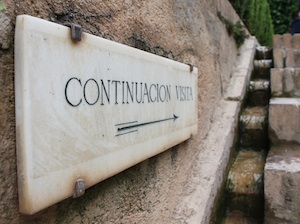Task List vs. To-Do List

In the previous post I described my way of using the calendar. In this one I will tell about two other tools that together with the calendar form the core of my time management system: the task list and the to-do list. For many, the terms “task list” and “to-do list” mean the same. In my view, though, they are quite different.
Task list contains items that are in essence mini-projects. Each item on the task list has a name that clearly defines its scope. It also has priority, deadline date, and status. Items are grouped into areas based on the nature of tasks. For example, in my current task list at work there is an area called “Research & Analysis”. Under it there is a task titled “Conduct research of XYZ market and create presentation of findings”. Its priority is “Medium”, deadline — “2013-09-15”, status — “In progress”. Note that the name of the task contains verbs that tell exactly what needs to be done, not just a generic title “XYZ research”. I’ve found that this way of naming tasks actually helps to think in a more actionable way when one reviews the list, especially when it has many items that have been there for a long time.
The kind of items that go on the task list take no less than a whole day of dedicated work to complete. Otherwise they don’t deserve to be called tasks and should instead be treated as to-do items and captured in the to-do list. In fact, most of the items on my task list require more than a week to get done.
I review and update my task list regularly but very not often. Anywhere from once every couple of days to once a week is a good frequency. Each review takes 5–10 minutes and allows me to understand the status all projects and plan out my available time in the next few days according to priorities and deadlines. This planning actually results in scheduling time on the calendar and writing down to-do items in the to-do list. Another useful function of the task list is that it can be shared with one’s manager to provide visibility into their direct’s work and jointly discuss active projects and priorities.
In terms of technological implementation, my task list lives in Google Spreadsheet. For me it’s the optimal compromise between a plain text file and a fancy app. It is very simple and dynamic, yet it allows formatting and ability to filter and sort items by status, date, or priority.
To-do list is a much simpler and much more dynamic instrument. It is basically a list of atomic actions items that can be done quickly — each takes no more than a few hours, usually even less. Each task on the task list may result in numerous to-do items every day while the task is in progress.
The tool and format of the to-do list is as plain as it gets. In my case it’s a simple text file synchronized over Dropbox to be accessible on all devices with the most basic tool of all — Notepad. This file is open on my monitor most of the time and I edit it dozens of times every day as I complete some items and add new ones. Inside the file each line contains a to-do item and a date, for example: “Register at XYZ to get access of free report samples [Aug 31]”. There is no need to specify priority of to-do items, because their very order defines the priority. What’s on the top is more important than what’s down below, and needs to be done first. If priorities change during the course of the day, the lines just move around. If there wasn’t enough time in a day to complete some items, they just move to tomorrow and [Aug 31] becomes [Sep 01].
This, in short, is how I use task list and to-do list to keep track of my projects and responsibilities. In future posts I will continue sharing some other simple practices I employ to improve my time management and personal productivity in general, including effective use of email, iPhone, and social networks.